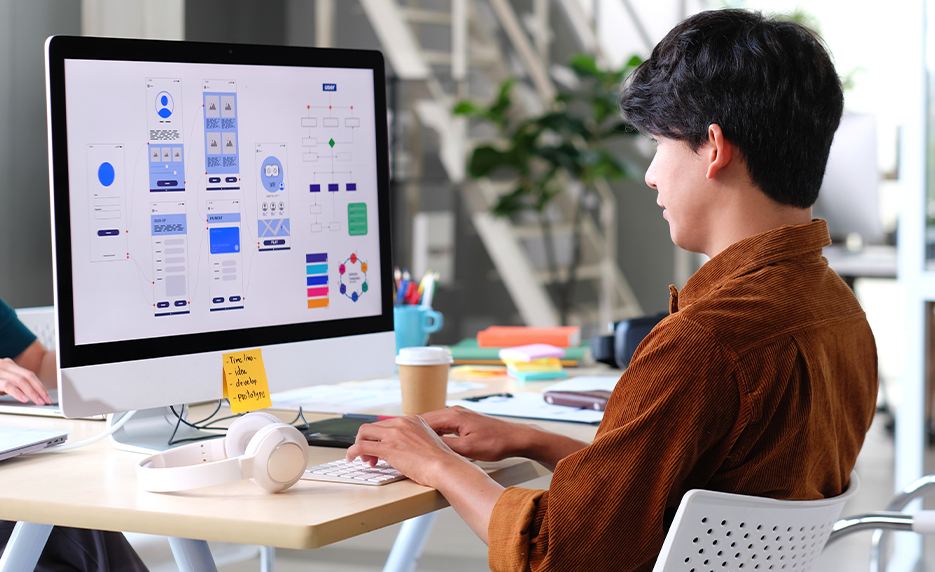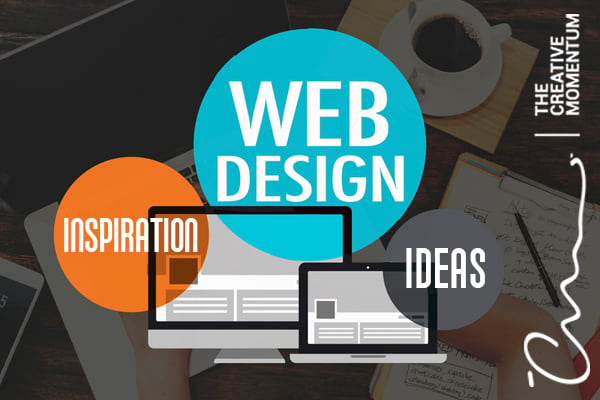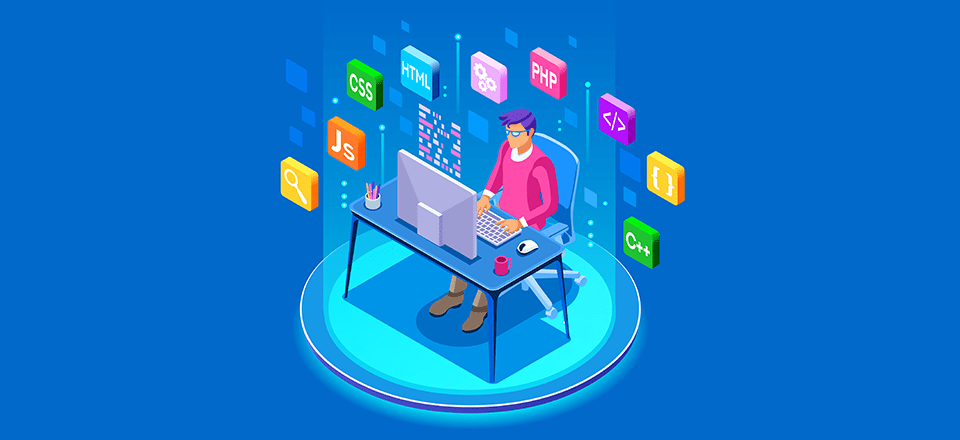All Categories
Featured
Table of Contents
- – Website Design - Best Ecommerce Web Design By ...
- – Web Developers And Digital Designers - Bureau...
- – Web Design And Engineering Major - Santa Clar...
- – Figma: The Collaborative Interface Design Too...
- – Web Design And Applications - W3c Tips and Tr...
- – Lifted Logic: Web Design In Kansas City - Seo...
- – Pueblo Web Design Tips and Tricks:
- – Webpage Design (Article) - Further Learning ...
- – Learning Web Design: A Beginner's Guide To H...
- – Web Design Vs. Web Development - Upwork Tips...
- – Lifted Logic: Web Design In Kansas City - Se...
Website Design - Best Ecommerce Web Design By Shopify Tips and Tricks:
Quick summary Functionality and the utility, not the visual design, determine the success or failure of a website. Because the visitor of the page is the only person who clicks the mouse and for that reason chooses everything, user-centric style has established as a basic approach for effective and profit-oriented web design - web design frederick md.
and the energy, not the visual style, determine the success or failure of a website. Considering that the visitor of the page is the only person who clicks the mouse and for that reason chooses whatever, user-centric style has actually ended up being a basic method for successful and profit-oriented web style. If users can't use a function, it might as well not exist.
g. where the search box should be put) as it has currently been done in a variety of short articles; instead we concentrate on the approaches which, utilized effectively, can cause more sophisticated design decisions and streamline the process of viewing provided details. Please discover that you might be interested in the usability-related short articles we have actually published prior to: Principles Of Great Site Design And Efficient Website Design Standards, In order to use the principles effectively we first require to understand how users communicate with sites, how they think and what are the basic patterns of users' behavior.
Web Developers And Digital Designers - Bureau Of Labor ... Tips and Tricks:
Visitors glance at each brand-new page, scan a few of the text, and click the first link that captures their interest or slightly resembles the important things they're looking for. In fact, there are big parts of the page they do not even take a look at. The majority of users look for something intriguing (or helpful) and clickable; as quickly as some appealing candidates are found, users click.
If a page offers users with premium content, they are prepared to jeopardize the material with advertisements and the design of the website. This is the reason not-that-well-designed sites with premium content acquire a great deal of traffic over years. Content is more important than the design which supports it.

Users do not check out, they scan. Notice how "hot" locations abrupt in the middle of sentences. This is common for the scanning process. Extremely basic concept: If a site isn't able to fulfill users' expectations, then designer stopped working to get his job done appropriately and the business loses money. The greater is the cognitive load and the less user-friendly is the navigation, the more ready are users to leave the website and look for alternatives.
Web Design And Engineering Major - Santa Clara University Tips and Tricks:
Neither do they scan web page in a linear style, going sequentially from one site area to another one. Instead users satisfice; they select the very first affordable choice. As quickly as they discover a link that looks like it might cause the goal, there is an excellent chance that it will be immediately clicked.
It does not matter to us if we comprehend how things work, as long as we can utilize them. If your audience is going to imitate you're designing signboard, then style great signboards." Users wish to be able to manage their browser and count on the consistent data discussion throughout the website.
If the navigation and site architecture aren't intuitive, the number of enigma grows and makes it harder for users to understand how the system works and how to receive from point A to point B. A clear structure, moderate visual hints and easily identifiable links can help users to find their path to their objective.
Figma: The Collaborative Interface Design Tool. Tips and Tricks:

claims to be "beyond channels, beyond items, beyond circulation". What does it indicate? Considering that users tend to check out sites according to the "F"-pattern, these three statements would be the very first components users will see on the page once it is packed. The design itself is basic and user-friendly, to understand what the page is about the user needs to search for the answer.
When you've achieved this, you can communicate why the system is helpful and how users can take advantage of it. Individuals will not utilize your website if they can't find their way around it. 2. Don't Misuse Users' Patience, In every task when you are going to provide your visitors some service or tool, try to keep your user requirements minimal.
Newbie visitors want to, not filling long web forms for an account they may never utilize in the future. Let users explore the website and find your services without requiring them into sharing personal data. It's not sensible to require users to go into an e-mail address to evaluate the function.
Web Design And Applications - W3c Tips and Tricks:
Stikkit is a best example for an easy to use service which requires almost absolutely nothing from the visitor which is inconspicuous and comforting. Which's what you desire your users to feel on your website. Apparently, Mite requires more. The registration can be done in less than 30 seconds as the form has horizontal orientation, the user doesn't even require to scroll the page.
A user registration alone is adequate of an impediment to user navigation to cut down on incoming traffic. Handle To Focus Users' Attention, As websites provide both fixed and dynamic material, some aspects of the user interface draw in attention more than others do.
Focusing users' attention to specific areas of the site with a moderate usage of visual components can help your visitors to receive from point A to point B without thinking about how it in fact is supposed to be done. The less enigma visitors have, the they have and the more trust they can develop towards the company the site represents.
Lifted Logic: Web Design In Kansas City - Seo - Website ... Tips and Tricks:
4. Pursue Feature Direct exposure, Modern web designs are usually slammed due to their method of assisting users with visually appealing 1-2-3-done-steps, big buttons with visual results etc. From the style point of view these aspects in fact aren't a bad thing. On the contrary, such as they lead the visitors through the website material in a very easy and user-friendly way.
The site has 9 main navigation alternatives which show up at the very first look. The choice of colors might be too light, though. is an essential concept of successful interface style. It does not truly matter how this is attained. What matters is that the material is well-understood and visitors feel comfortable with the way they communicate with the system.
Rather a cost: simply what visitors are looking for. An optimum option for effective writing is touse brief and succinct expressions (come to the point as rapidly as possible), use scannable layout (classify the content, utilize multiple heading levels, use visual elements and bulleted lists which break the circulation of consistent text blocks), use plain and unbiased language (a promo doesn't need to sound like ad; give your users some affordable and unbiased factor why they need to use your service or remain on your site)6.
Pueblo Web Design Tips and Tricks:
Users are hardly ever on a site to take pleasure in the style; additionally, most of the times they are searching for the info in spite of the style - web design frederick md. Pursue simpleness instead of complexity. From the visitors' viewpoint, the very best website style is a pure text, without any advertisements or more content obstructs matching exactly the question visitors used or the material they have actually been looking for.
Finch clearly provides the info about the site and offers visitors an option of choices without overcrowding them with unneeded content. Not only does it help to for the visitors, but it makes it possible to view the info presented on the screen.
Complex structures are harder to read, scan, analyze and deal with. If you have the choice in between separating 2 style sectors by a visible line or by some whitespace, it's typically better to use the whitespace solution. (Simon's Law): the much better you manage to offer users with a sense of visual hierarchy, the much easier your content will be to view.
Webpage Design (Article) - Further Learning - Khan Academy Tips and Tricks:
The same conventions and guidelines should be used to all elements.: do the most with the least amount of cues and visual elements. Clearness: all components ought to be created so their significance is not uncertain.
Conventions Are Our Buddies, Traditional style of website components does not lead to an uninteresting website. As they reduce the finding out curve, the need to figure out how things work. It would be a functionality nightmare if all websites had various visual presentation of RSS-feeds. That's not that various from our regular life where we tend to get used to standard concepts of how we organize information (folders) or do shopping (placement of items).
comprehend what they're getting out of a site navigation, text structure, search placement etc. A common example from usability sessions is to translate the page in Japanese (assuming your web users do not understand Japanese, e. g. with Babelfish) and provide your functionality testers with a task to discover something in the page of different language.
Learning Web Design: A Beginner's Guide To Html, Css ... Tips and Tricks:
Steve Krug suggests that it's better to, however benefit from conventions when you do not. 10. Test Early, Test Often, This so-called TETO-principle should be used to every web style project as use tests frequently offer into significant issues and concerns associated with a given design. Test not too late, not too little and not for the wrong factors.
Some essential points to keep in mind: according to Steve Krug, and testing one user early in the project is much better than testing 50 near the end. Accoring to Boehm's first law, mistakes are most regular during requirements and design activities and are the more expensive the later on they are removed.
That implies that you develop something, test it, fix it and then check it again. There might be issues which haven't been found during the first round as users were practically blocked by other issues.
Web Design Vs. Web Development - Upwork Tips and Tricks:

This holds for designers. After you have actually worked on a site for couple of weeks, you can't observe it from a fresh perspective anymore. You understand how it is built and therefore you understand exactly how it works you have the knowledge independent testers and visitors of your site wouldn't have.
It can be connected to other locations such as graphic style, user experience, and multimedia arts, but is more aptly seen from a technological standpoint. It has become a large part of individuals's everyday lives. It is difficult to envision the Internet without animated graphics, different designs of typography, background, videos and music.

Throughout 1991 to 1993 the Web was born. Text-only pages might be seen using a simple line-mode web browser. In 1993 Marc Andreessen and Eric Bina, developed the Mosaic web browser. At the time there were several internet browsers, however the bulk of them were Unix-based and naturally text heavy. There had been no integrated approach to graphic design aspects such as images or sounds.
Lifted Logic: Web Design In Kansas City - Seo - Website ... Tips and Tricks:
The W3C was developed in October 1994 to "lead the World Wide Web to its complete potential by developing typical procedures that promote its development and ensure its interoperability." This discouraged any one business from monopolizing a propriety web browser and programming language, which could have changed the result of the Internet as a whole.
As this has taken place the innovation of the web has likewise moved on. There have likewise been substantial changes in the way individuals use and access the web, and this has actually altered how websites are developed. Considering that completion of the browsers wars [] brand-new web browsers have actually been released. Many of these are open source indicating that they tend to have faster development and are more helpful of brand-new standards.
Learn more about Lovell Media Group LLC or TrainACETable of Contents
- – Website Design - Best Ecommerce Web Design By ...
- – Web Developers And Digital Designers - Bureau...
- – Web Design And Engineering Major - Santa Clar...
- – Figma: The Collaborative Interface Design Too...
- – Web Design And Applications - W3c Tips and Tr...
- – Lifted Logic: Web Design In Kansas City - Seo...
- – Pueblo Web Design Tips and Tricks:
- – Webpage Design (Article) - Further Learning ...
- – Learning Web Design: A Beginner's Guide To H...
- – Web Design Vs. Web Development - Upwork Tips...
- – Lifted Logic: Web Design In Kansas City - Se...
Latest Posts
Web Design Definition - Techterms Tips and Tricks:
Arch Web Design: Top-rated Web Design Agency For Saas ... Tips and Tricks:
Collaborate & Create Amazing Graphic Design For Free Tips and Tricks:
More
Latest Posts
Web Design Definition - Techterms Tips and Tricks:
Arch Web Design: Top-rated Web Design Agency For Saas ... Tips and Tricks:
Collaborate & Create Amazing Graphic Design For Free Tips and Tricks: